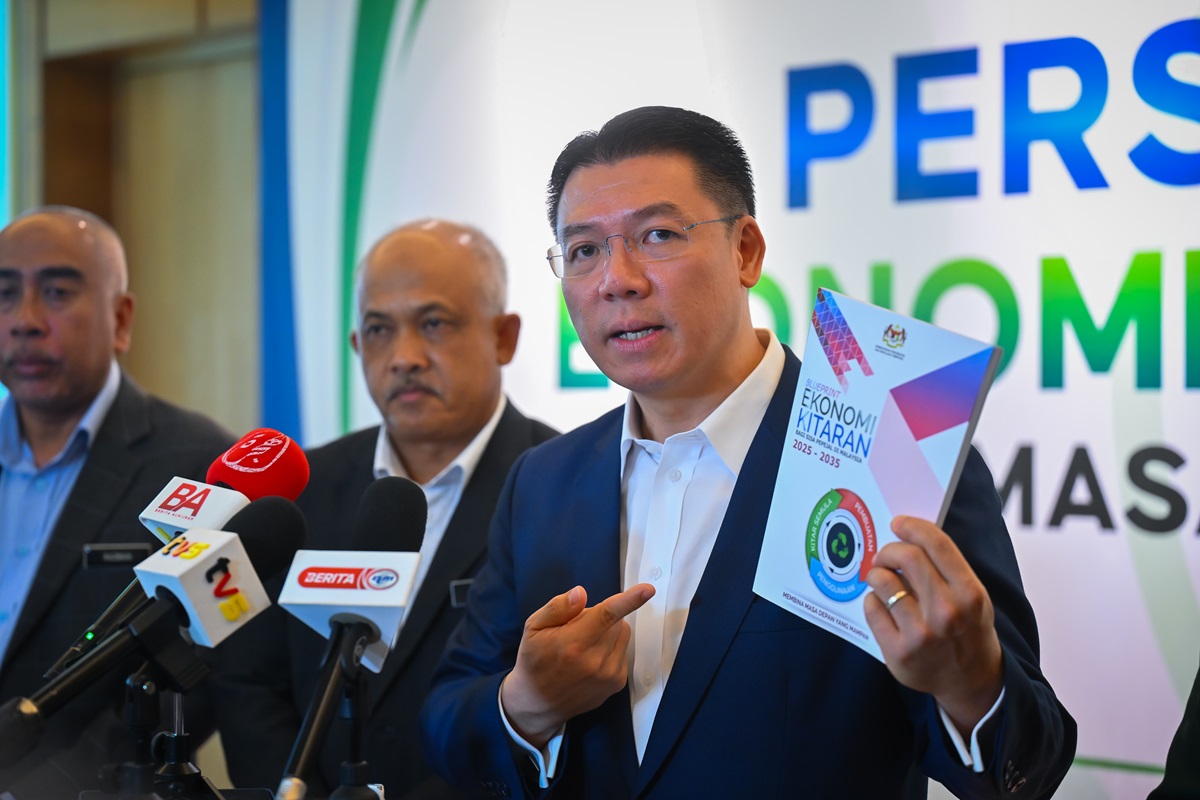Housing Ministry Launches Circular Economy Blueprint, Study on Circular Economy Act
edgeinvest
Publish date: Wed, 07 Aug 2024, 09:35 AM

KUALA LUMPUR (Aug 6): The Ministry of Housing and Local Government (KPKT) launched on Tuesday the Circular Economy Blueprint for Solid Waste in Malaysia (2025-2035), which includes establishing legislation related to the Extended Producer Responsibility (EPR) scheme and a zero-waste-to-landfill certification for manufacturers.
Additionally, the ministry is kickstarting a study on introducing the Circular Economy Act to prepare for the implementation of the circular economy.
“The circular economy approach aims to maintain the value of materials by extending the life of a product through environmentally friendly design and recycling practices to close the loop for the waste sector,” said KPKT Minister Nga Kor Ming at the Circular Economy Conference 2024: Building a Sustainable Future held at Doubletree by Hilton Kuala Lumpur on Tuesday.
“Circular economy is capable of reducing dependence on natural resources, reducing waste generation, minimising negative impacts on the environment, and further assisting the country in achieving its target of net zero carbon emissions by 2050.”
The blueprint has five strategic pillars, 20 initiatives and related action plans and timelines. According to the minister, 27 stakeholder engagement sessions were held prior to the launch of the blueprint.
The five strategic pillars include governance and legislation, where implementation of EPR will be enabled. EPR puts the responsibility on manufacturers to ensure that end-of-life packaging and products are managed properly.
The second pillar is on guidelines and procedures, which will introduce the zero-waste-to-landfill certification that recognises manufacturers who enhance their resource efficiency and minimise waste generation. The certification can be used to determine the producer’s eligibility for incentives related to the circular economy.
The third pillar is on utilising data systems to collect and analyse data across the waste management value chain, while the fourth pillar encourages development of facilities such as waste-eco parks and integrated waste management facilities.
The fifth pillar involves promoting the growth of the recycling and solid waste-based industries by introducing incentives for companies, implementing a pay-as-you-throw scheme to incentivise waste reduction and investing in research and development efforts.
Additionally, a National Circular Economy Association will be established, which will work closely with the Circular Economy Council for Solid Waste at the national level.
It is hoped that these efforts will increase the country’s national recycling rate from 35.38% in 2023 to 40% by 2025, and reduce the amount of waste going to the landfill. Currently, Malaysians throw away around 39,000 tonnes of solid waste, equivalent to 1.17kg per person, according to the minister.
Food waste is the largest component (44.5%) of household waste, followed by plastic waste (13.2%), disposable diapers (12.1%) and paper (8.5%).
Waste-to-energy (WTE) plants are part of the plan and the way forward, said the minister at the press conference after his opening speech. In response to a question about protests regarding WTE plants in Malaysia, Nga said the government has also received support from various parties to use this technology.
“We take a fair and balanced approach; we believe in science and we are a data-driven government,” he said. He added that China and Singapore are using WTE to manage waste, and Malaysia will only adopt technologies that have been proven to be safe.
“In Malaysia, we only have one WTE [plant] at the moment, that’s in Port Dickson. There’s a reason why, according to our findings and statistics, we are able to have 18 WTE [plants], which are financially viable and environmentally sustainable.”
Source: TheEdge - 7 Aug 2024
More articles on CEO Morning Brief
Created by edgeinvest | Aug 07, 2024
Created by edgeinvest | Aug 07, 2024
Created by edgeinvest | Aug 07, 2024
Created by edgeinvest | Aug 07, 2024
Created by edgeinvest | Aug 07, 2024


















